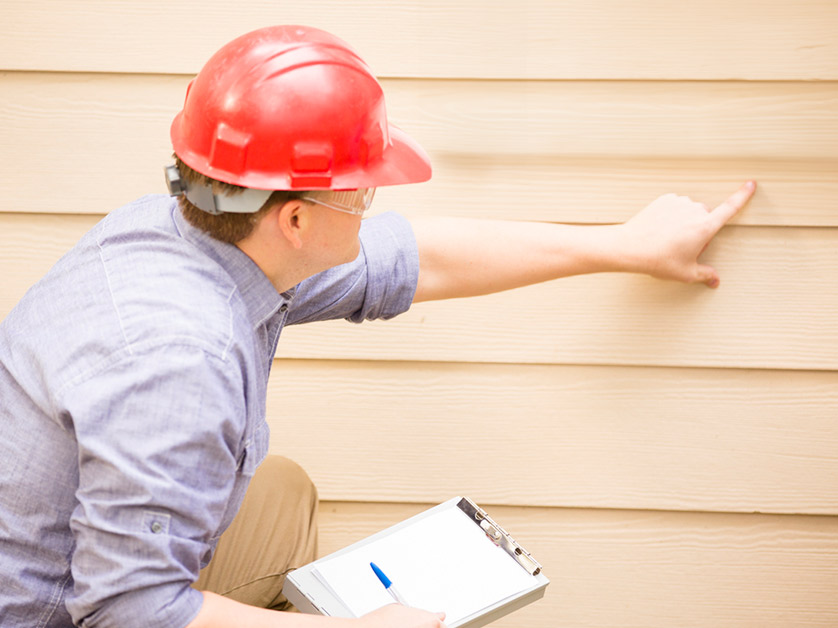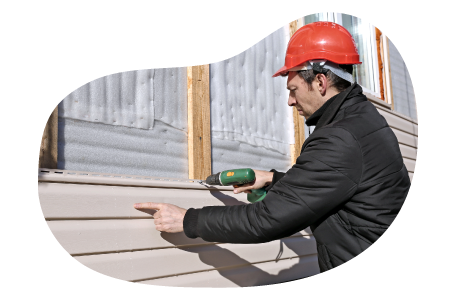Professional Morris Siding Contractor Offering Quick and Efficient Service
Wiki Article
The Essential Overview to the Numerous Kinds Of House Siding and Their Unique Benefits
In the world of home improvement, selecting the appropriate home siding is an essential choice that influences both visual appeal and practical efficiency. With so lots of options to consider, which home siding material genuinely stands out for your specific project?Wood Home Siding
Wood home siding, a popular choice for residential exteriors, provides a timeless visual that incorporates natural charm with structural stability. This exterior siding material is available in different designs, consisting of clapboard, shingles, and board-and-batten, allowing home owners to customize their appearance to match their design choices. Timber siding is generally crafted from long lasting varieties such as cedar, redwood, or want, which are recognized for their strength and ability to withstand ecological stress factors.One of the main benefits of wood siding is its excellent insulation homes, which can add to power efficiency and lower home heating prices. Additionally, wood siding is naturally degradable, making it an eco-friendly option when sourced sustainably. Routine maintenance, including paint or discoloration, can prolong its lifespan and improve its look, permitting house owners to maintain the natural appeal of the timber.
Nonetheless, potential downsides include sensitivity to parasites, rot, and climate damage, requiring appropriate treatment and upkeep - morris siding contractor. Despite these issues, when appropriately looked after, timber siding can offer a gorgeous and sturdy solution that boosts the personality of a home while supplying a warm, welcoming environment

Vinyl Exterior Siding
Plastic home siding has become a leading option for house owners seeking a low-maintenance exterior option that combines toughness and price. This flexible product is crafted from polyvinyl chloride (PVC), making it resistant to numerous weather conditions, consisting of wetness and UV rays. Therefore, vinyl house siding does not warp, rot, or fade, making certain long-lasting aesthetic allure.Among the primary benefits of vinyl home siding is its considerable series of designs and shades, permitting homeowners to accomplish the preferred look for their residential or commercial property without the requirement for frequent repainting. Furthermore, vinyl exterior siding is easy to install, which can significantly minimize labor expenses throughout construction or improvement jobs.
Plastic siding additionally adds to power performance. Numerous choices attribute insulation support, which improves thermal performance, aiding to keep comfy interior temperatures and possibly reducing energy costs. Furthermore, its smooth surface area assists in very easy cleansing, calling for only regular cleaning with a garden tube to remove dirt and debris.
Fiber Cement Siding
Fiber cement home siding has gained traction among homeowners and contractors alike because of its impressive combination of resilience and visual flexibility. Made up of a blend of cellulose, sand, and cement fibers, this siding option is engineered to withstand severe weather, including high winds, heavy rainfall, and temperature level changes, making it a long-lasting option for residential outsides.
Among the main advantages of fiber cement house siding is its resistance to pests, such as termites, and its non-combustible nature, offering boosted fire security. morris siding contractor. Additionally, it is readily available in a broad selection of appearances, styles, and colors, permitting house owners to attain their desired visual without compromising efficiency
An additional advantage is its low maintenance demands; fiber concrete home siding normally needs paint or discoloration every 5-10 years, which is much less constant than various other products. Its longevity contributes to a lower general price of possession, as it minimizes the requirement for constant fixings or substitutes.
Inevitably, fiber cement exterior siding stands for a superb financial investment for those seeking a resilient, appealing, and flexible exterior alternative, integrating both form and feature to improve the home's curb allure.
Metal Siding
The allure of metal exterior siding exists in its durable toughness and modern-day visual charm, making it a favored option for modern architecture. Offered in products such as aluminum and steel, steel house siding supplies a range of shades and finishes, permitting house owners to accomplish a personalized appearance that enhances their design vision.
Energy performance is one more considerable benefit, as numerous steel house siding items are created with insulation options that aid control indoor temperatures. This can result in internet reduced energy costs with time. Additionally, metal house siding is typically recyclable, making it an eco-friendly option for sustainability-minded house owners.
The setup process for steel house siding can be relatively straightforward, causing a quicker turnaround time for building and construction jobs. On the whole, metal home siding integrates performance and style, making it a functional option for those seeking a aesthetically attractive and long-lasting outside coating.
Block and Stone Exterior Siding
Block and stone house siding attracts attention as an ageless option that improves the aesthetic beauty of any type of home. Known for their sturdiness and reduced maintenance, these materials supply an outstanding return on investment while raising the residential property's curb charm. Offered in various shades, structures, and patterns, brick and stone can be tailored to fit diverse building designs, from standard to contemporary.Among the primary advantages of block and rock siding is their energy performance. Both materials have natural protecting residential properties that aid manage interior temperatures, possibly lowering cooling and heating expenses. Additionally, they offer superior fire resistance contrasted to various other house siding choices, adding to boosted safety.
An additional benefit is their longevity. Brick and rock can last for years, usually needing very little maintenance beyond periodic cleaning. Unlike wood house siding, they are impervious to bugs and rot, making sure a long-lasting exterior that endures the aspects.
Final Thought
In summary, the selection of house siding significantly affects a home's visual allure, energy effectiveness, and upkeep needs. Each kind of siding-- whether timber, vinyl, fiber steel, cement, or block and stone-- supplies special benefits tailored to see here now various home owner choices and ecological problems. Understanding these alternatives allows educated decisions that boost both the sturdiness and visual beauty of residential exteriors. Ultimately, choosing the ideal siding is vital for attaining a balance in between functionality and style in residential style.One of the main benefits of timber home siding is its superb insulation residential or commercial properties, get redirected here which can add to energy effectiveness and reduced heating expenses. Additionally, wood exterior siding is eco-friendly, making it an environmentally pleasant option when sourced sustainably.One of the primary benefits of steel home siding is its resistance to various ecological variables.Power efficiency is another substantial benefit, as numerous metal home siding products are created with insulation options that help manage indoor temperature levels. Each kind of house siding-- whether timber, plastic, fiber steel, block, or concrete and stone-- offers distinct advantages customized to different home owner preferences and environmental conditions.
Report this wiki page